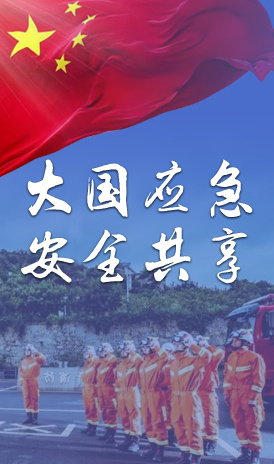
1、 The main responsible persons and safety production management personnel of hazardous chemical production and operation units have not passed the assessment in accordance with the law.
2、 Special operation personnel are not certified to work.
3、 The external safety protection distance of production equipment and storage facilities involving "two key points and one major" does not meet the national standard requirements.
4、 The equipment involved in key regulated hazardous chemical processes has not achieved automated control, the system has not implemented emergency shutdown function, and the automated control system and emergency shutdown system of the equipment have not been put into use.
5、 The hazardous chemical tank area that constitutes a first and second level major hazard source has not achieved emergency shutdown function; The hazardous chemical tank area involving toxic gases, liquefied gases, and highly toxic liquids in the first and second level major hazard sources is not equipped with an independent safety instrument system.
6、 The full pressure liquefied hydrocarbon storage tank has not been equipped with water injection measures according to national standards.
7、 The filling of flammable, explosive, toxic, and harmful liquefied gases such as liquefied hydrocarbons, liquid ammonia, and liquid chlorine does not use a universal pipeline filling system.
8、 Highly toxic gases such as phosgene and chlorine, as well as hydrogen sulfide gas pipelines, pass through public areas outside the factory area (including chemical and industrial parks).
1、 How to apply for hazardous chemical qualifications?
The following conditions are required to apply for a Hazardous Chemicals Business License:
(1) The operation and storage sites, facilities, and buildings comply with national standards such as the "Code for Fire Protection Design of Buildings", "Safety Regulations for Explosive Hazardous Areas", and "Warehouse Fire Safety Management Rules";
The building shall be inspected and approved by the public security fire department; The business premises comply with the relevant regulations and requirements of the industry and commerce department regarding business premises.
(2) The operating and storage conditions comply with the provisions of the "Operating Conditions and Technical Requirements for Hazardous Chemical Trading Enterprises" and the "General Rules for the Storage of Commonly Used Hazardous Chemicals";
(3) The main responsible persons and supervisors, safety production management personnel, and business personnel of the unit must undergo professional training, pass assessments, and obtain job qualifications;
(4) Having sound management systems and safety production management systems;
(5) There is an emergency response plan for accidents in our unit. If a business unit leases a business premises or storage premises, the business unit shall jointly prepare an emergency response plan for accidents with the owner of the business premises or storage premises;
(6) Other conditions stipulated by laws and regulations.
2、 Dangerous Goods Warehouse Management System
1. Special warehouses for dangerous goods shall comply with national standards for safety and fire safety, and set up clear safety warning signs. The storage equipment and safety facilities of specialized warehouses for hazardous chemicals should be regularly inspected.
2. The door of the dangerous goods warehouse should open outward. No one is allowed to live in the warehouse, and unrelated personnel are not allowed to enter. After the work is completed, a fire prevention inspection should be carried out to cut off the power, close the windows and lock the doors.
3. When dangerous goods are stored, the variety, specifications, quality, and quantity of the items must be checked. Items without origin, inspection certificates, and safety technical specifications must not be stored. When distributing flammable and explosive materials, the variety, specifications, and quantity must be carefully checked. Items without origin, inspection certificates, and safety technical specifications must not be stored. When distributing flammable and explosive materials, the variety, specifications, and quantity must be carefully checked and relevant procedures must be strictly followed.
4. Smoking and the use of open flames are strictly prohibited in warehouses storing dangerous goods. The warehouse lighting and necessary electrical equipment should have fire and explosion prevention functions. The maintenance of electrical equipment and equipment in the warehouse should be approved by the safety department.
5. Testing, packaging, packing, welding, and other operations that may cause fires are not allowed in warehouses storing hazardous materials.
6. Dangerous goods should be classified and stored in separate piles. Stacking should not be too high, and there should be a certain distance, passage, and ventilation opening between overly dense piles.
7. Items that are prone to combustion and explosion due to mutual contact, as well as items with different firefighting methods, should be stored separately.
The relevant legal basis associated with this article
Article 4 of the Regulations on the Safety Management of Hazardous Chemicals stipulates that the safety management of hazardous chemicals should adhere to the principles of safety first, prevention as the main focus, and comprehensive management, and strengthen and implement the main responsibility of enterprises. The main person in charge of units that produce, store, use, operate, and transport hazardous chemicals (hereinafter referred to as hazardous chemical units) is fully responsible for the safety management of hazardous chemicals in their respective units. Dangerous chemical units shall have the safety conditions required by laws, administrative regulations, national standards, and industry standards, establish and improve safety management regulations and job safety responsibility systems, and provide safety education, legal education, and job technical training to employees. Employees should receive education and training, and only work after passing the assessment; For positions that require qualifications, personnel who have obtained corresponding qualifications in accordance with the law should be equipped.